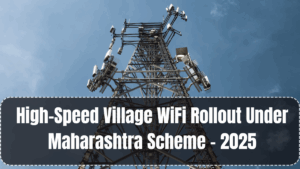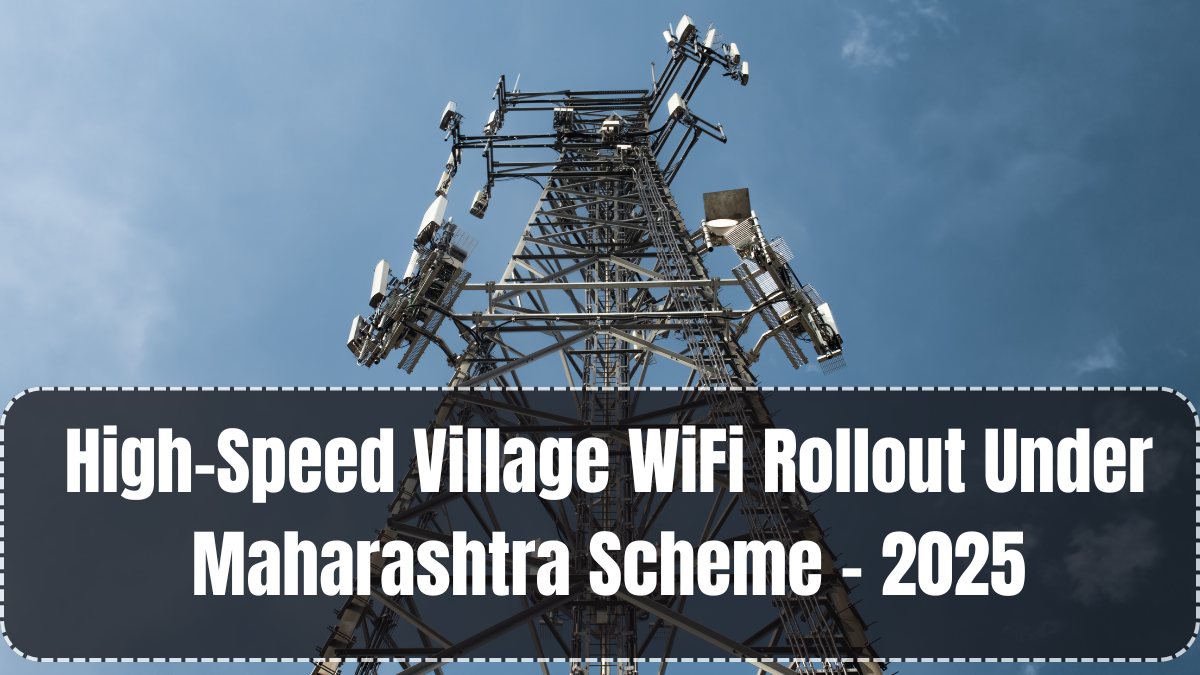In a groundbreaking move to bridge India’s digital divide, the Village WiFi Rollout under Maharashtra’s 2025 rural mission is transforming remote villages into high-speed internet zones. Access to the internet is no longer a luxury—it’s a necessity, especially for students, farmers, entrepreneurs, and local governance.
With the government’s push for “Digital Gaon,” this initiative ensures that even the most underserved rural corners are connected with reliable WiFi. From e-learning to banking, this digital upgrade is opening doors to limitless possibilities in rural Maharashtra.

Scope of the WiFi Rollout Mission
The Village WiFi Rollout is part of a larger e-governance and digital infrastructure push under the 2025 Gram Panchayat Scheme. The target is to connect over 25,000 villages with high-speed WiFi networks by the end of the year.
The initiative focuses on:
-
Enabling public internet zones in village libraries, schools, and gram panchayat offices
-
Connecting remote areas via fiber optics and satellite-based solutions
-
Offering basic internet access for free or at subsidized rates
The vision is to create a digitally inclusive rural Maharashtra that enables equal opportunities for all.
Key Features of the WiFi Infrastructure
The success of the Village WiFi Rollout relies on cutting-edge yet cost-effective infrastructure. The government has collaborated with telecom providers and state-run agencies to deploy robust systems in rural areas.
Important components include:
-
BharatNet fiber optic backbone and satellite hotspots
-
Central routers placed in panchayat halls and village schools
-
Solar-powered access points for regions with irregular electricity
-
Daily data limits per user to ensure fair access
These setups are maintained by local operators trained under government-run skill programs.
Benefits for Rural Communities
The Village WiFi Rollout brings wide-ranging benefits that uplift every section of village society. These include:
| Sector | Impact of WiFi Rollout |
|---|---|
| Education | Free access to online classes, YouTube, digital courses |
| Farmers | Real-time mandi prices, weather forecasts, subsidy portals |
| Women & Youth | Online job applications, skill courses, financial independence |
| Health | Telemedicine consultations, online appointments |
| Governance | Digital panchayat portals, complaint registration, scheme updates |
By improving connectivity, villages are now better integrated with state-level and national digital services.
Implementation Timeline and Phases
The rollout is happening in structured phases to ensure quality and speed. As per the Village WiFi Rollout roadmap:
-
Phase 1 (Jan–Mar 2025): 5,000 villages in tribal and remote regions
-
Phase 2 (Apr–Jul 2025): 10,000 villages across semi-urban belts
-
Phase 3 (Aug–Dec 2025): 10,000 additional villages including coastal and drought-prone zones
Each phase is followed by feedback collection and bandwidth testing to refine service delivery.
Government Partnerships and Funding
This project is a joint effort between the Maharashtra Rural Development Department, BSNL, and selected private ISPs. Funding comes from:
-
Central Digital India Mission support
-
State-level rural innovation grants
-
CSR contributions from telecom companies
-
Panchayat co-funding for maintenance
The total estimated budget for the Village WiFi Rollout is ₹3,000 crore, with strict monitoring protocols to ensure transparency.
How Villagers Can Access and Use the Service
Once a village is WiFi-enabled, villagers can connect easily using their mobile phones or laptops. Here’s how:
-
Register on the local GramNet app using Aadhaar
-
Log in to the WiFi zone with a mobile OTP
-
Use up to 1GB daily at high speed, then switch to basic speed
-
Recharge for more data at subsidized village rates
Digital help centers are set up to assist first-time users and elderly citizens.
FAQs
Which villages are getting WiFi in 2025?
Over 25,000 villages in Maharashtra are covered under the current Village WiFi Rollout, selected based on connectivity gaps and population size.
Is the WiFi free for villagers?
Yes, basic access is free up to a daily data cap. Subsidized top-ups are available at low rates through GramNet counters.
How fast is the internet under this scheme?
Villagers get up to 30 Mbps speeds for basic use like browsing, video calls, and educational content.
Can students use the internet for online exams?
Yes, students can access all major educational portals, learning apps, and exam platforms using village WiFi.
What if the connection stops working?
Local operators are trained to handle basic repairs. Villagers can also raise issues via the GramNet mobile app for quick resolution.
Click here to know more.
